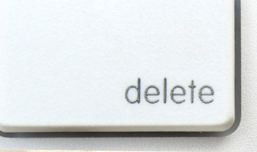Skinny labelling and the blue box concept
Skinny labelling
No medicinal product can be placed on the market in the European Union (EU) unless a marketing authorisation has been granted for the product.
As part of that approval process, product information (the Summary of Product Characteristics ("SmPC"), the package leaflet for patients and the labelling) must be submitted to the relevant regulator. This includes information on indications and dosages. There is a requirement that when a generic medicine is authorised that the same information will appear in the 'product information' of the generic medicine as that of the reference medicine.
However, when patent protection for a reference medicine expires, it is common for further indications of the medicine to remain independently patented. Thus, the medicine itself can be manufactured without patent infringement but cannot be used for the patented uses. Therefore, if generics were obliged to include the new indication in their product information they would be liable for patent infringement. This would potentially enable the manufacturer or exclusive licensee of the reference product to prevent generic marketing of the product indefinitely.
Consequently, the European medicines legislation allows the generic applicant for a marketing authorisation to exclude parts of the labelling referring to indications or dosage forms, which are protected by patents, from the product information. This is often referred to as "carving-out" patent protected labelling or "skinny labelling". If the application for authorisation is via the centralised route, an application for a duplicate marketing authorisation can be made in which the patented indications are excluded.
 The legislation does not discuss any other deletions or changes directly connected to the patented indication, for example safety information, contraindications or warnings that may allude to the patented indication; and the guidance is that any other deletions will need to be justified and discussed with the Member States concerned. When a carve-out is requested, the individual Member States decide if a statement to explain why therapeutic indications or dosage forms are missing from the package leaflet should be included. However, if such a statement is included it should use the "blue box concept".
The legislation does not discuss any other deletions or changes directly connected to the patented indication, for example safety information, contraindications or warnings that may allude to the patented indication; and the guidance is that any other deletions will need to be justified and discussed with the Member States concerned. When a carve-out is requested, the individual Member States decide if a statement to explain why therapeutic indications or dosage forms are missing from the package leaflet should be included. However, if such a statement is included it should use the "blue box concept".
Blue Box Concept – standard form
'(Active substance) which is contained in (product) (may also be/is also)* authorised to treat other conditions which are not mentioned in this leaflet. Ask your doctor or pharmacist if you have further questions.'
* (as appropriate for the national market)
Off-label prescribing
With the increase in off-label prescribing in Europe, it could be argued that the carve-outs used by generic firms ignore market realities and that even if a generic drug is formally approved only for unpatented uses, doctors will prescribe (in circumstances where guidelines permit for the patented indication and pharmacists may nonetheless substitute the generic for all indications once it becomes available.
This has led to disputes in the national courts about the infringement of second medical use patents. We discuss the present approach to this subject in Infringement of second medical use patents in Germany and the UK.
If you have any questions on this article or would like to propose a subject to be addressed by Synapse please contact us.


Paul England
Paul is a senior associate and professional support lawyer in the Patents group based in our London office.

